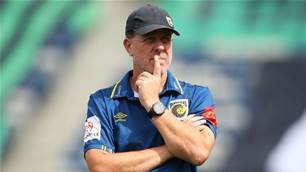The Video Assistant Referee (VAR) might be all the talk these days but another officiating addition could revolutionize the way we watch football.
Indeed, sports lovers watching the NFL or the NBA play-offs or rugby union will be familiar with referees wearing microphones, with their decisions and conversations being broadcast on the coverage. It’s nothing new.
It’s certainly not new ground in Australia. It’s already happened in the AFL and both rugby codes, while to an extent it happens in cricket – with the third umpire.
But it would be ground-breaking for football, even though the refs already wear mics to communicate with their assistants and the fourth official. Those conversations are not for public consumption.
However, if the refs were mic’d up, would it add to the coverage?
PROS
There’s no doubt football fans regularly disagree with the referee’s decision. Thus the insight into referees’ decision-making processes afforded by the mics would be valuable and an opportunity for justification.
Fans have the option to buy the ‘Ref Link’ when watching rugby union in the UK for the extra insight they provide.
Indeed, from a VAR perspective, an immediate explanation might quickly justify decisions. Whether that’s practical remains to be seen, particularly given the frustration arising from the time it takes to use VAR, let alone offer an explanation.
However, cricket and hockey video umpires/referees quickly and successfully justify decision-making in their sports as they ‘roll the tape’, so there’s scope to making it work, although that’s very different from the on-field official.
CONS
One of the big arguments against ref mics in football is the surrounding noise which gets picked up on the coverage, often expletives and abuse.
Sadly, the attitude of competitors towards referees in football is very different to a lot of other sports and that’s not easily reversed.
The example of rugby union, where the ref mic works well, is enabled by the players’ respect towards the officials. That’s not to say expletives aren’t picked up in other sports, just ask Essendon’s Brendon Goddard who was caught calling North Melbourne’s Jack Ziebell a “weak c---“ in 2015. We know cricket’s Stump Cam issues too.
But football’s culture of crowding the referee and protesting decisions isn’t one easily fixed and there’s a big fear about the ‘colourful language’ which would be picked up by a ref mic.
Way back in 1989, English referee David Elleray wore a mic during an Arsenal-Millwall match for a documentary which picked up lots of ugly expletive-laden abuse, with Gunners defender Tony Adams caught calling the ref a “cheat”.
Indeed, ref mics offer an insight which aren’t in commercial interests for sponsors and subsequently broadcasters, let alone the players who want to be painted as rolemodels.
There’s also the fear of the trickle down effect to grass roots level where behavior gets replicated by youngsters.
PROS
However, there is an argument using ref mics might force players to curb their behavior and ultimately enhance fair play and respect towards officials.
Ex-England rugby forward Brian Moore, who comes from a sport where ref mics work well, argues: "There would be carnage for about six weeks and then it would be sorted. But the problem is this: when you speak to people in football a lot of them say 'you can't do that'.
"The fact is you can do it, there's no technical reason or moral reason. It's just that they are afraid that people will hear just how bad it is."
While we can’t yet hear the ref during play, you can get still get the full effect of every other stadium sound with the JBL Bar Series.
We are giving you the chance to win a JBL Bar 3.1 one valued at $699. Simply enter our competition and tell us what your favourite chant is.
Click here to find out more about the JBL BAR Series.

Related Articles

Champion A-League coach set to join Premier League giants

Emerging Socceroos star set to sign for MLS club













